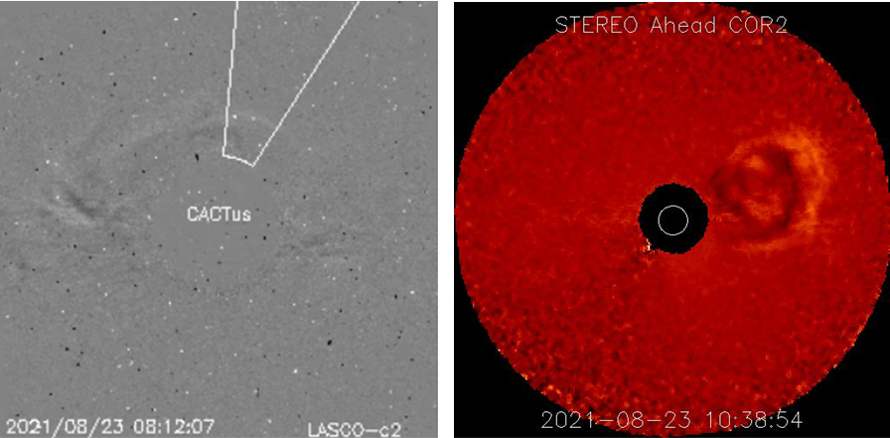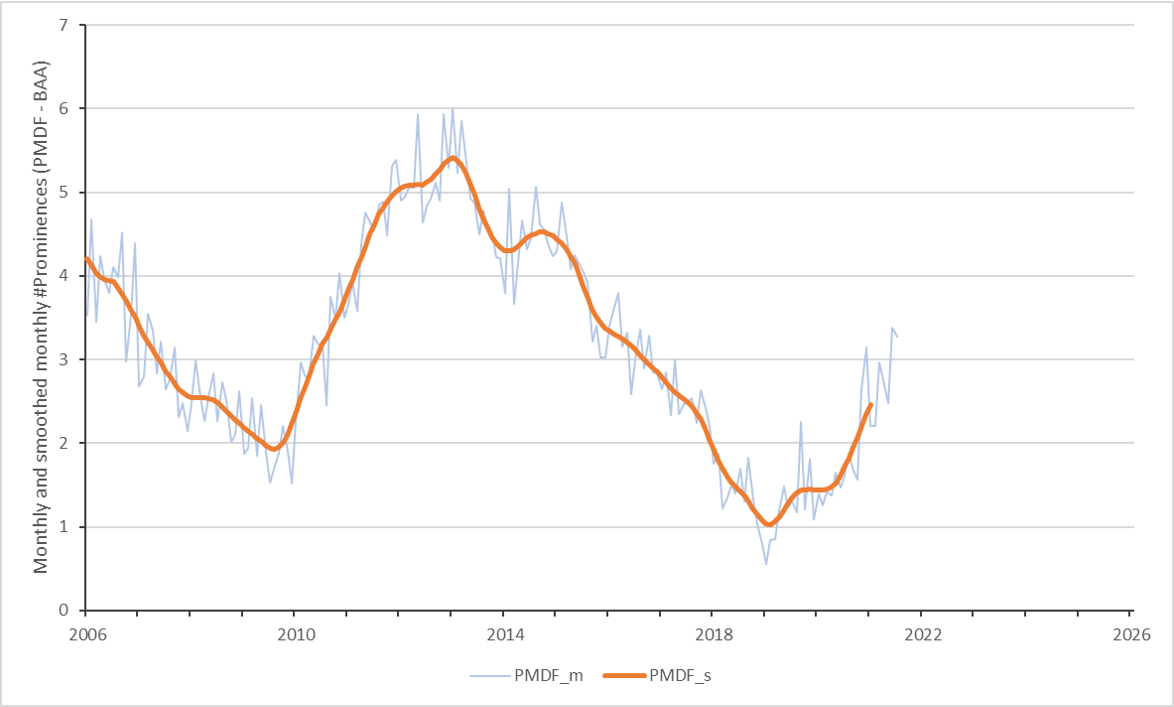Solar filaments are clouds of charged particles ("plasma") above the solar surface squeezed between magnetic regions of opposite polarity. Being cooler and denser than the plasma underneath and their surroundings, they appear as dark lines when seen on the solar disk and as bright blobs when seen near the solar limb (then they are called "prominences"). Special filters are required to observe these features, such as e.g. the Hydrogen-alpha (H-alpha) filter (H-alpha a line in the red part of the solar spectrum).
Late on 13 August, a prominence became visible behind the northeast solar limb. As it got carried to and over the limb by the solar rotation, the height of the prominence rose to about 100.000 km. Certainly not a record, but many solar observers reported on the dynamics of the prominence. On 17 August, it started its transit over the solar limb. When the filament was finally fully visible on the solar disk (late on 19 August), it showed a peculiar upside-down U-shape, with its western (leading) leg somewhat longer and close to the extension of the Sun's northern polar coronal hole. The filament remained relatively stable, until it started to dissolve on 22 August, gradually erupting late on 22 and early on 23 August. The dissolution was visible in H-alpha and in extreme ultraviolet (EUV), the eruptive part was only visible in EUV.

Above imagery was obtained from the GONG H-alpha Network. The images cover the period from 13 till 23 August (a cadence of about 2 hours).

Above imagery (annotated) was obtained with SDO/AIA from 20 till 23 August, with on the left AIA304 showing the Sun's atmosphere at relatively low temperatures of about 80.000 degrees, and on the right AIA193 covering higher temperatures near 1.25 million degrees. Whereas the AIA304 images remain closer to what was visible in H-alpha, the AIA193 images depict much better the intricate nature of the filament's dissolution and final eruption. The latter is highlighted in the zoomed version of the eruption below.


The associated coronal mass ejection (CME) was barely distinguishable in SOHO/LASCO C2 coronagraphic imagery (top left - from the CACTus website). The bulk of the CME is directed away from Earth (northwards), but an earth-directed component is not excluded and may deliver a glancing blow within a few days (STEREO-A/COR2 image to the right).

Solar observers have recorded an increased number of filaments and prominences over the last few months. The Solar Section of the British Astronomical Association has already a decades-long track of counting the daily number of prominences (H-alpha), called the Prominence Mean Daily Frequency (PMDF). The graph above shows the monthly and monthly smoothed number of prominences as compiled from their network obvservations, clearly showing the PMDF is on the rise again after a minimum which as deeper than the previous one. With still a number of years to go to the maximum, this number is expected to further increase considerably.





